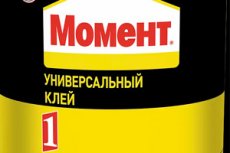Glue vapor poisoning
Last reviewed: 07.06.2024

All iLive content is medically reviewed or fact checked to ensure as much factual accuracy as possible.
We have strict sourcing guidelines and only link to reputable media sites, academic research institutions and, whenever possible, medically peer reviewed studies. Note that the numbers in parentheses ([1], [2], etc.) are clickable links to these studies.
If you feel that any of our content is inaccurate, out-of-date, or otherwise questionable, please select it and press Ctrl + Enter.

Glue is a sticky substance made of compounds that vary in their chemical structure and origin, but are capable of bonding different materials. Inhalation intoxication is often accidental. When working with the substance for long periods of time, large amounts of vapors are inhaled. Intoxication is possible with toxicomania and suicidal intent.
Glue poisoning, also known as "inhalation poisoning," occurs when a person inhales vapors or fumes of glue containing chemicals that can cause toxic effects on the body.
Symptoms of the glue poisoning
The symptomatology of intoxication has several stages depending on the severity:
1. Acute vapor poisoning
- Dizziness.
- Loss of consciousness.
- Euphoria and irritability.
- Increased lacrimation.
- Muscle weakness.
- Unpleasant taste in the mouth.
- Elevated body temperature.
- Dilated pupils.
- Pale skin.
- Shortness of breath.
- Heart rhythm disturbance.
- Decrease in blood pressure.
- Auditory hallucinations.
- Double vision.
Very often the acute symptomatology resembles alcohol intoxication. The victim has a shaky gait and impaired coordination of movements. Possible attacks of nausea and vomiting, which does not bring relief. Such symptomatology is temporary and quickly passes after the elimination of the irritating factor.
2. Severe lesion
- Loss of consciousness.
- Comatose.
- Heart rhythm disturbance (in particularly severe cases - cardiac arrest).
- Decreased/absence of reflexes.
- Indomitable vomiting of central genesis due to brainstem irritation.
- Other focal neurologic symptoms.
3. Chronic intoxication
- Drowsiness.
- Irritability.
- Dizziness and headaches.
- Memory decline.
- The sensation of goosebumps crawling.
- Decreased visual acuity.
- Increased levels of direct and indirect bilirubin.
- Liver enlargement.
- Decrease in plasma albumin levels.
The above symptoms develop with prolonged inhalation of glue vapors. If the preparation contains epoxide, it has a debilitating effect on the CNS. Different types of glue cause different respiratory diseases (chronic bronchitis, pneumonia, pulmonary emphysema), severe dermatitis, CNS disorders.
Treatment of the glue poisoning
First Aid:
- Remove the victim from the room where intoxication has occurred and provide a supply of fresh air.
- If breathing stops, cardiopulmonary resuscitation should be started immediately.
- If the glue has been ingested, you should induce vomiting (by pressing on the root of the tongue), drink a large volume of liquid or wash the stomach with a probe.
- If the organs of vision are affected, the eyes are washed under running water and an occlusive dressing is applied.
Further treatment of the injured person is handled by medical personnel. If necessary, he is hospitalized, detailed diagnostics and complex therapy are carried out.
If the painful condition is left without medical attention, it can cause the development of complications. Most often patients develop chronic bronchitis, bronchiectatic disease, chronic dermatitis. It is also possible to reduce visual acuity, cancer, aplastic anemia and many others.

